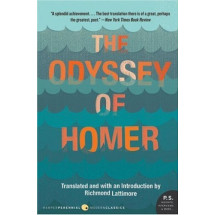How did the human brain evolve so that consciousness of art could develop? In The Psychology of Art and the Evolution of the Conscious Brain, Robert Solso describes how a consciousness that evolved for other purposes perceives and creates art. Drawing on his earlier book Cognition and the Visual Arts and ten years of new findings in cognitive research (as well as new ideas in anthropology and art history), Solso shows that consciousness developed gradually, with distinct components that evolved over time. One of these components is an adaptive consciousness that includes the ability to imagine objects that are not present--an ability that allows us to create (and perceive) visual art. Solso describes the neurological, perceptual, and cognitive sequence that occurs when we view art, and the often inexpressible effect that a work of art has on us. He shows that there are two aspects to viewing art: nativistic perception--the synchronicity of eye and brain that transforms electromagnetic energy into neuro-chemical codes--which is "hard-wired" into the sensory-cognitive system; and directed perception, which incorporates personal history and knowledge--the entire set of our expectations and past experiences. Both forms of perception are part of the appreciation of art, and both are products of the evolution of the conscious brain over hundreds of thousands of years. Solso also investigates the related issues of neurological and artistic perception of the human face, the effects of visual illusions, and the use of perspective. The many works of art used as examples are drawn from a wide range of artistic traditions, from ancient Egypt to Africa and India and the European Renaissance.
1 Art and the Rise of Consciousness 15
Changes in Science, Changes in Art 18
Traditional Ways of Understanding Art
Psychophysical Dualism 19
Art and Mind
A Unitary View 21
The Evolution of Art and Consciousness 24
The Rise of Consciousness as a Scientific Topic 25
AWAREness
The Five Facets of Consciousness 26
From Nucleotides to Newton 36
2 Art and Evolution 39
The "New and Improved" Brain and Technology, Art, Language, and Culture 41
Neanderthals, Cro-Magnons, and Dogs That Can't Hunt 46
The Cognitive "Big Bang" 51
The Cognitive Blueprint 58
Environmental and Dietary Changes 62
Brains and Adaptation 66
The Evolution of the Brain 69
3 Art and Vision 73
Visual AWAREness 73
Seeing with Brain and Eye
The Dynamic Properties of Vision 76
The Eye 82
Beautiful Colors 92
From the Eye to the Brain 97
The Visual System and the Perception of Art 99
4 Art and the Brain 107
The Evolution of the Consciously AWARE Brain 108
The Cognitive Big Bang and the Emergence of Art 113
What Brains Do 117
"Raphael's Brain" 129
5 About Face 133
Faces Are Special in Art 140
Domain Specificity and Faces 141
What the Portrait Artist's Brain "Sees" 149
The Face as a Reflection of the "Inner Person" 163
6 Illusions
Sensory, Cognitive, and Artistic 169
Sensory Illusions
Truth or Fiction? 170
Cognitive Illusions
Twisting Truth 172
Visual Illusions 178
Artistic Illusions 184
First-Order Isomorphism and Proto-Isomorphism 194
7 Perspective
The Art of Illusion 197
Seeing a 3D World with a 2D Eye 197
Principles of Depth Perception
Where Is It? 201
Recumbent Figures
Why They Are So Hard to Draw 215
8 Art and Schemata 223
Schemata 223
Visual Dissonance 235
Canonic Representations 240
Representational Art--Abstract Art 248
A Cognitive Neuroscience Theory of Aesthetics 254
Robert L. Solso is Professor and Head of the Cognitive Laboratory at the University of Nevada, Reno.














